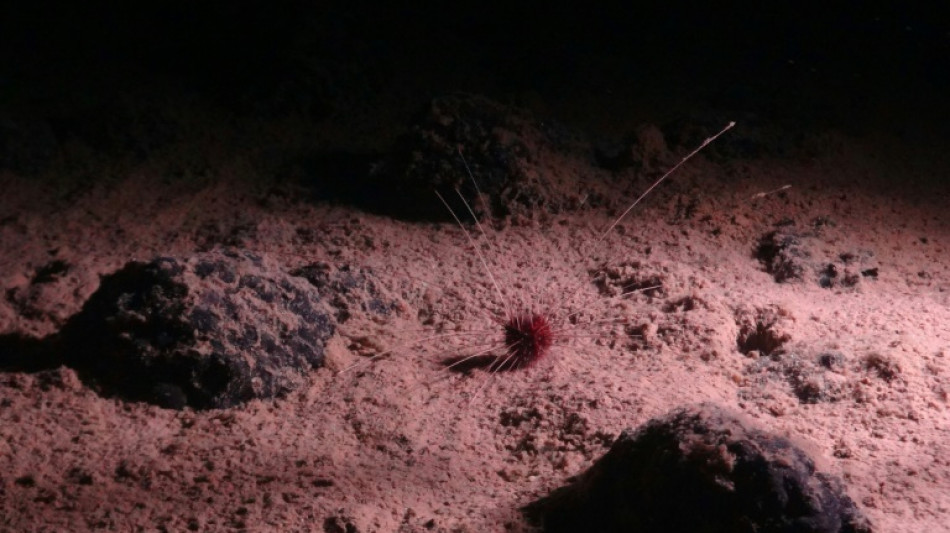
-
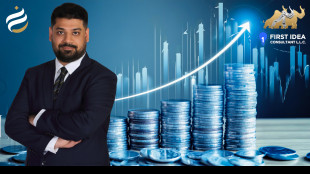 Scandic Trust Group strengthens sales network with First Idea Consultant
Scandic Trust Group strengthens sales network with First Idea Consultant
-
Deadly Typhoon Kalmaegi ravages Vietnam, Philippines

-
 Three killed in new US strike on alleged drug boat, toll at 70
Three killed in new US strike on alleged drug boat, toll at 70
-
Chinese microdrama creators turn to AI despite job loss concerns

-
 Trump hails Central Asia's 'unbelievable potential' at summit
Trump hails Central Asia's 'unbelievable potential' at summit
-
Kolya, the Ukrainian teen preparing for frontline battle
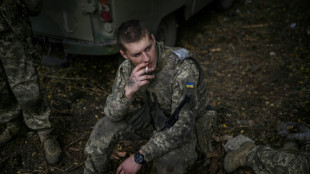
-
 Big leap in quest to get to bottom of climate ice mystery
Big leap in quest to get to bottom of climate ice mystery
-
Markets drop as valuations and US jobs, rates spook investors

-
 'Soap opera on cocaine': how vertical dramas flipped Hollywood
'Soap opera on cocaine': how vertical dramas flipped Hollywood
-
Under pressure? EU states on edge over migrant burden-sharing

-
 US influencers falsely associate Mamdani with extremist group
US influencers falsely associate Mamdani with extremist group
-
Hungary's Orban to meet Trump in face of Russia oil sanctions

-
 US facing travel chaos as flights cut due to govt shutdown
US facing travel chaos as flights cut due to govt shutdown
-
Liverpool and Man City renew rivalry as they try to narrow Arsenal gap
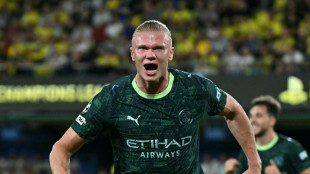
-
 UK's Andrew asked to testify over Epstein as he formally loses titles
UK's Andrew asked to testify over Epstein as he formally loses titles
-
Local hero: 'DC sandwich guy' found not guilty of assaulting officer with sub

-
 Dead famous: Paris puts heritage graves up for grabs
Dead famous: Paris puts heritage graves up for grabs
-
UK grandmother on Indonesia death row flies home
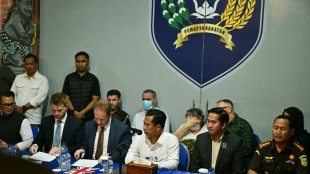
-
 Former NFL star Brown extradited from Dubai to face trial in shooting - police
Former NFL star Brown extradited from Dubai to face trial in shooting - police
-
Chile presidential hopeful vows to expel 'criminal' migrants to El Salvador

-
 Trump event paused in Oval Office when guest faints
Trump event paused in Oval Office when guest faints
-
NFL Colts add Sauce to recipe while Patriots confront Baker

-
 Home owned by Miami Heat coach Spoelstra damaged by fire
Home owned by Miami Heat coach Spoelstra damaged by fire
-
Tesla shareholders approve Musk's $1 trillion pay package

-
 World leaders launch fund to save forests, get first $5 bn
World leaders launch fund to save forests, get first $5 bn
-
Villa edge Maccabi Tel Aviv in fraught Europa League match

-
 Protests as Villa beat Maccabi Tel Aviv under tight security
Protests as Villa beat Maccabi Tel Aviv under tight security
-
US Supreme Court backs Trump admin's passport gender policy

-
 Japan boss Jones backs Farrell to revive Ireland's fortunes
Japan boss Jones backs Farrell to revive Ireland's fortunes
-
MLB Padres name former reliever Stammen new manager

-
 'Grand Theft Auto VI' video game delayed again until Nov. 2026
'Grand Theft Auto VI' video game delayed again until Nov. 2026
-
Martino returns as head coach of MLS Atlanta United

-
 Hamilton dismisses Ferrari exit claims
Hamilton dismisses Ferrari exit claims
-
Musetti keeps ATP Finals hopes alive, joins Djokovic in Athens semis

-
 England boss Borthwick wants 'brilliant' Marcus Smith to shine against Fiji
England boss Borthwick wants 'brilliant' Marcus Smith to shine against Fiji
-
Piastri says he is confident he can recover and win drivers' title

-
 Verstappen admits he may need a bit of 'luck' to haul in rivals in title race
Verstappen admits he may need a bit of 'luck' to haul in rivals in title race
-
Kazakhstan to join Abraham Accords as Trump pushes Mideast peace

-
 'Moral failure': Leaders seek to rally world at Amazon climate talks
'Moral failure': Leaders seek to rally world at Amazon climate talks
-
UN Security Council votes to lift sanctions on Syrian president

-
 Democratic giant, trailblazer and Trump foe Nancy Pelosi to retire
Democratic giant, trailblazer and Trump foe Nancy Pelosi to retire
-
World leaders ditch ties at sweaty climate summit

-
 Dallas Cowboys' Marshawn Kneeland dies at 24
Dallas Cowboys' Marshawn Kneeland dies at 24
-
Rally outside Rockstar against GTA studio's 'union busting'

-
 McLaren boss says would rather lose title than issue team orders
McLaren boss says would rather lose title than issue team orders
-
Sabalenka, top WTA stars urge Slams to revive 'stalled' negotiations

-
 5 killed in Afghan-Pakistan border fire despite peace talks: official
5 killed in Afghan-Pakistan border fire despite peace talks: official
-
Trump unveils deals to lower costs of some weight-loss drugs

-
 Controversial Canadian ostrich cull order will go ahead
Controversial Canadian ostrich cull order will go ahead
-
Mexico's Sheinbaum to boost reporting of sexual abuse after being groped


Deep sea mining impacts visible for 'many decades'
Scientists said they have seen the first signs of life returning to deep sea mining tracks carved into the abyssal seabed more than four decades ago, but warned on Wednesday that full recovery may be "impossible".
The new research, published in the journal Nature, comes as countries argue over the creation of the world's first mining code on deep sea extraction at a meeting of the International Seabed Authority (ISA) in Kingston, Jamaica.
Scientists and campaigners have long insisted that future industrial-level mining will threaten marine ecosystems.
Risks range from species extinctions and damage to the ocean food web, to the potential for exacerbating climate change by churning up sediment that stores planet-heating carbon.
In the latest research, scientists in Britain assessed the lasting impact of one of the oldest known mining tracks in the vast Clarion-Clipperton Zone (CCZ), stretching between Hawaii and Mexico in international waters.
At depths of more than 4,000 metres (13,000 feet), the seabed here is scattered with metal rich rocks known as "nodules" and is home to a huge number of strange and rare animals almost entirely unknown to science.
A 1979 test in the CCZ left a wide strip of seabed cleared of nodules and framed by deep tracks eight metres (26 foot) apart made by the mining machine.
In 2023, scientists surveyed the site and found these marks in the seafloor remained clearly visible.
"The numbers of many animals were reduced within the tracks but we did see some of the first signs of biological recovery," said lead author Daniel Jones of the National Oceanography Centre.
While small and more mobile creatures were seen within the mining area, larger-sized animals that are fixed to the seafloor were still "very rare", he said.
The sediment plumes kicked up by the machines where not found to have had a lasting impact, according to the research.
The authors said that while more modern equipment could be designed to limit the impact on ocean wildlife, the likely scale of any mining operations if they went ahead meant "visible physical impacts of the collection can be assumed to last for at least many decades".
They added that a full return of life in affected regions "may be impossible" with the removal of the nodules, which are themselves a habitat for marine animals.
- Spies to smartphones -
The research marks "the longest term assessment of a deep sea mining track", Jones told reporters earlier this month.
Jones trawled the archives to pinpoint the location of the 1979 test, which was carried out following a CIA plot to recover a Russian nuclear submarine -- using deep-sea mining as a cover story.
The CIA then leased their ship for real deep-sea mining, according to Jones.
He said the 1979 test, carried out by private firms, was to see if harvesting the nodules was technically feasible and was "much smaller than a true mining event would look like".
After that, interest and funding fizzled out.
But recent years have seen renewed interest in exploiting the potato-sized nodules, which are thought to have formed over millions of years and contain metals like cobalt and nickel, which are used in technologies such as smartphones and rechargeable batteries.
There are estimated to be around 21 billion tonnes of nodules on the seabed of the CCZ.
"Our results don't provide an answer to whether deep-sea mining is societally acceptable, but they do provide the data needed to make better informed policy decisions," said co-author Adrian Glover from Britain's Natural History Museum.
He added that it could help in creating protected areas and inform monitoring efforts.
P.M.Smith--AMWN

